Is There Growing Demand for FSC-Certified Balloons?
Are you feeling the pressure to source eco-friendly products, yet unsure if the market truly cares about sustainable balloons? You are not alone. Many procurement managers face this exact dilemma.
Demand for FSC-certified latex balloons1 is poised for significant growth. Heightened environmental awareness among consumers and businesses is driving this shift, making eco-certified options2 increasingly attractive for meeting sustainability goals.
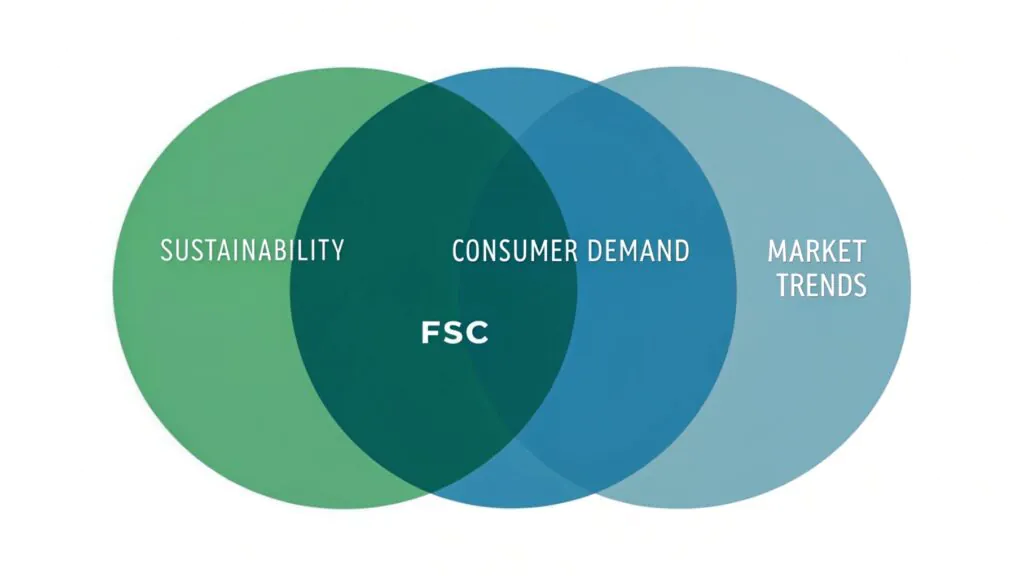
The move towards greener products is not just a passing trend. It reflects a fundamental change in how consumers think and how businesses operate. This is a journey we are all on together.
Are FSC-certified balloons available for wholesale purchase?
Do you find it difficult to locate reliable suppliers of FSC-certified balloons in bulk? Many buyers struggle to confirm the availability and authenticity of these products.
Yes, FSC-certified latex balloons are becoming more available for wholesale purchase. Manufacturers are responding to the growing demand for sustainable party supplies by securing appropriate certifications.
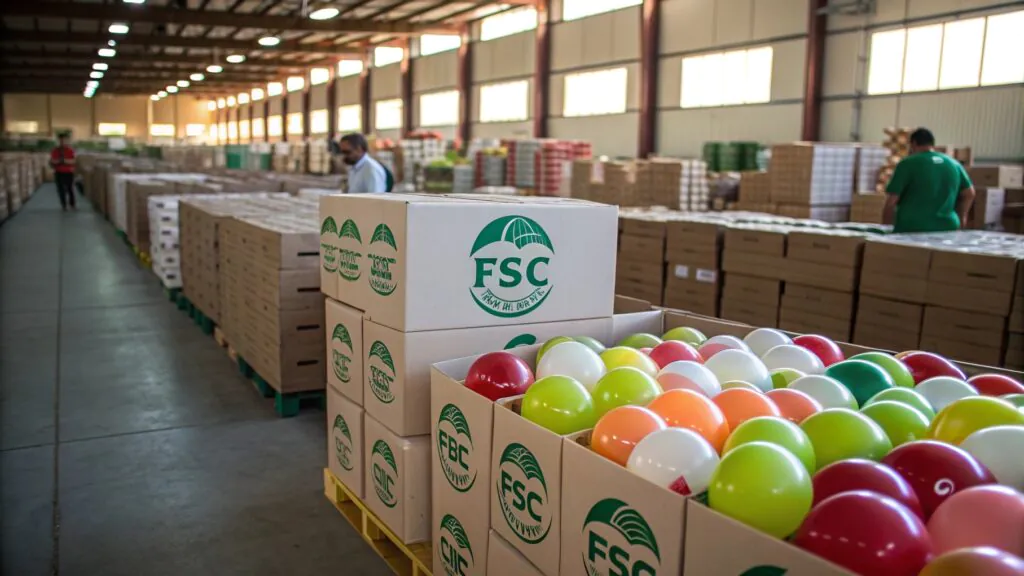
As a procurement manager, finding sustainable options is now a top priority. My team at AIHUA BALLOON has worked hard to understand this need. We believe in making it simpler for businesses like yours to source certified products. This is why we focus on transparency and verifiable certifications3 in our supply chain.
Understanding FSC Certification4 for Balloons
FSC (Forest Stewardship Council) certification for balloons typically applies to latex balloons. Latex comes from rubber trees. FSC certification ensures that the rubber is sourced from responsibly managed forests. These forests meet strict environmental, social, and economic standards.
| Aspect | Traditional Latex Sourcing | FSC-Certified Latex Sourcing |
|---|---|---|
| Environmental Impact | Potential deforestation, habitat loss, soil erosion | Sustainable forest management, biodiversity protection, reduced deforestation |
| Social Responsibility | Varying labor practices, potential exploitation | Fair wage, safe working conditions, community engagement |
| Economic Viability | Focus on short-term profit | Long-term forest health, stable jobs, responsible resource management |
| Traceability | Limited | Full chain of custody, transparent sourcing |
This certification is crucial for companies looking to meet their environmental goals. It helps ensure that your balloon products align with broader sustainability initiatives. Many of our partners, like Sarah Chen, emphasize the importance of these certifications. They want to show their customers that they are buying products that are good for the planet.
Which manufacturers offer eco-friendly certified balloon options?
Are you having trouble identifying trustworthy manufacturers that provide genuinely eco-friendly certified balloon options? It can be hard to tell what is truly sustainable.
Many reputable manufacturers are now offering eco-friendly certified balloon options. These manufacturers invest in certifications like FSC to prove their commitment to sustainable sourcing and production.
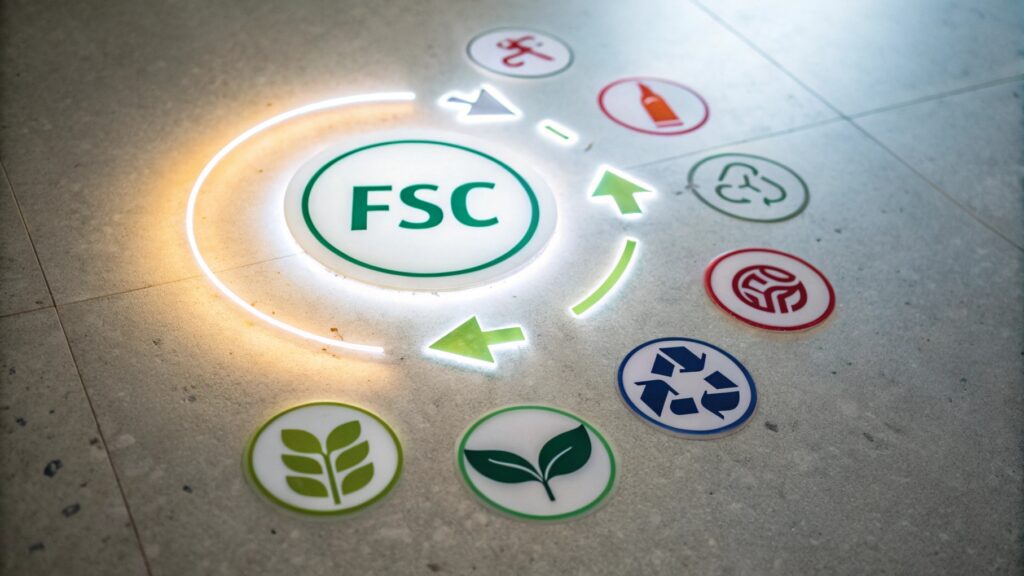
At AIHUA BALLOON, we have always believed in responsible manufacturing. We know that our customers, like Sarah, need to trust the products they buy. That means clear proof of environmental responsibility. This is why we prioritize working with suppliers who hold recognized certifications.
How to Identify Eco-Friendly Balloon Manufacturers
Identifying manufacturers with real eco-friendly credentials5 requires careful vetting. We look for specific certifications and transparent practices. This helps ensure that the claims are backed by third-party verification.
| Certification Type | Description | Importance for Balloons | What to Look For |
|---|---|---|---|
| FSC | Forest Stewardship Council: Sustainable forestry practices. | Ensures latex comes from responsibly managed rubber plantations. | Company's FSC chain-of-custody number. |
| ISO 140016 | Environmental Management System: Controls environmental impact. | Indicates manufacturer has systems for reducing their environmental footprint. | Valid ISO 14001 certification. |
| Sedex SMETA7 | Ethical Trade Audit: Covers labor, health, safety, environment. | Ensures fair labor practices and safe working conditions in manufacturing. | Sedex audit reports, A or B rating. |
| Green Seal | Lifecycle Assessment: Products meet rigorous sustainability standards. | Broader eco-friendly assessment, often for finished products. | Product-specific Green Seal certification. |
Always ask for valid certification documents. A reputable manufacturer will readily provide these. This transparency builds trust and confirms their commitment to genuinely sustainable production. We at AIHUA BALLOON make sure to verify all our certifications to give our partners peace of mind.
What are the sustainable alternatives to traditional balloons for events?
Do you feel limited by traditional balloon options and want to explore more sustainable choices for events? Finding effective and appealing alternatives can be a challenge.
Sustainable alternatives to traditional balloons are emerging, offering eco-conscious options for event planners and consumers. These alternatives range from FSC-certified latex balloons to entirely different decor.
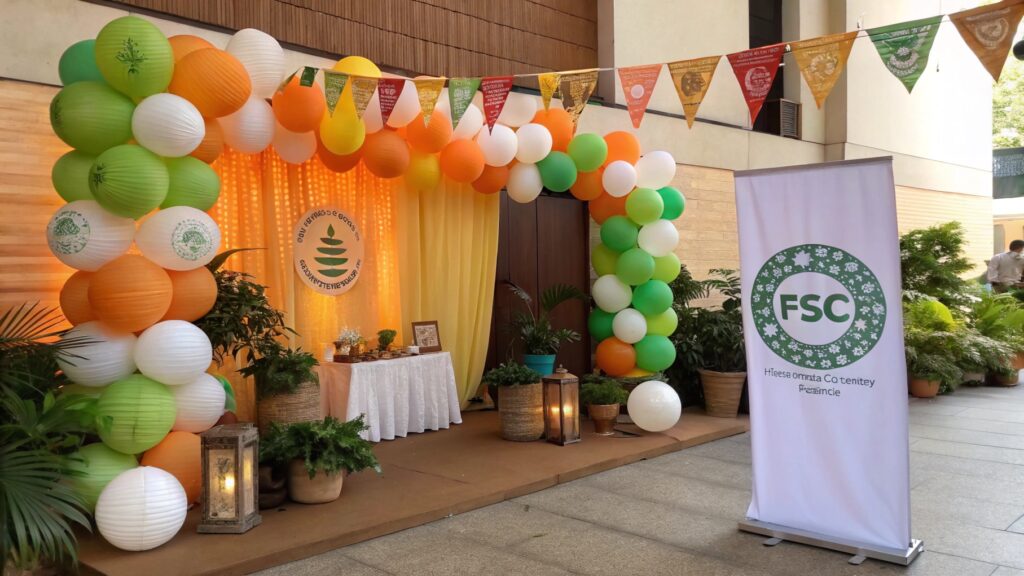
For years, traditional balloons have been a staple at events. But as environmental awareness grows, we need to think differently. My team at AIHUA BALLOON believes in offering choices that align with a greener future. We want to help our customers host beautiful events without compromising their values.
Exploring Sustainable Event Decor Materials
The shift towards sustainability means looking beyond just latex balloons. Event planners are now considering a wider range of materials. These materials have a lower environmental impact.
| Material Type | Description | Pros | Cons |
|---|---|---|---|
| FSC-Certified Latex | Made from natural rubber latex certified by FSC for responsible forest management. Biodegradable. | Natural, renewable resource; fully biodegradable; vibrant colors and shapes; familiar appearance. | Still requires responsible disposal8; perceived by some as less sustainable than non-balloon alternatives due to inflation gas requirements; may contain allergens for some individuals. |
| Paper Decorations | Banners, lanterns, pompoms, and garlands made from recycled or sustainably sourced paper9. | Highly customizable; wide range of colors and designs; often recyclable; low environmental impact10 if sourced well. | Less durable than balloons; can be damaged by moisture; may not create the same "airy" feel as balloons; more labor-intensive to set up for large installations. |
| Fabric Decorations | Reusable fabric banners, drapes, and backdrops made from organic cotton11, hemp, or recycled polyester. | Reusable for multiple events; durable; elegant appearance; can be fully customized and branded; long-lasting. | Higher upfront cost; may require cleaning and storage; less versatile for creating volumetric shapes compared to balloons; limited for dynamic, floating displays; not always biodegradable12 (especially polyester). |
| Natural Elements | Incorporating plants, flowers (local and seasonal), and natural wood elements13 into decor. | Beautiful, unique, and fresh aesthetic; compostable/biodegradable; supports local economies. | Can be delicate; may have shorter lifespan for fresh elements; not suitable for all event types; limited color palette compared to artificial decorations; potential allergens for some guests (pollen). |
| Recycled/Upcycled Materials | Decorations crafted from reclaimed plastic, glass, or metal, giving new life to discarded items. Examples include upcycled plastic bottle installations and metal sculptures. | Reduces waste; creative and unique14; can be very cost-effective; demonstrates strong commitment to circular economy principles15. | Requires specialized design and crafting; not always scalable for large events; appearance may not fit all event aesthetics; durability varies greatly depending on the material. |
| LED Lighting16 | Energy-efficient LED lights used for ambiance, mood lighting, or creating visual effects. Can be programmed to create dynamic displays17 without physical decorations. | Energy-efficient; long lifespan; reusable; creates stunning visual effects; no physical waste; can transform any space. | Can be costly upfront; requires power source; limited in creating physical, three-dimensional decorative elements; not a standalone decoration for all events; may require professional setup. |
Balancing aesthetics with environmental responsibility is key. FSC-certified latex balloons fit perfectly into this new landscape by offering a sustainable choice within the balloon category. This helps ensure that every event can be both beautiful and responsible.
How does FSC certification apply to biodegradable party supplies?
Are you confused about how FSC certification relates to the "biodegradable" claims often made for party supplies? It can be tricky to understand the real meaning behind these labels.
FSC certification specifically applies to products derived from responsibly managed forests, primarily natural rubber latex for balloons. It does not certify biodegradability itself, but FSC-certified latex balloons are naturally biodegradable.
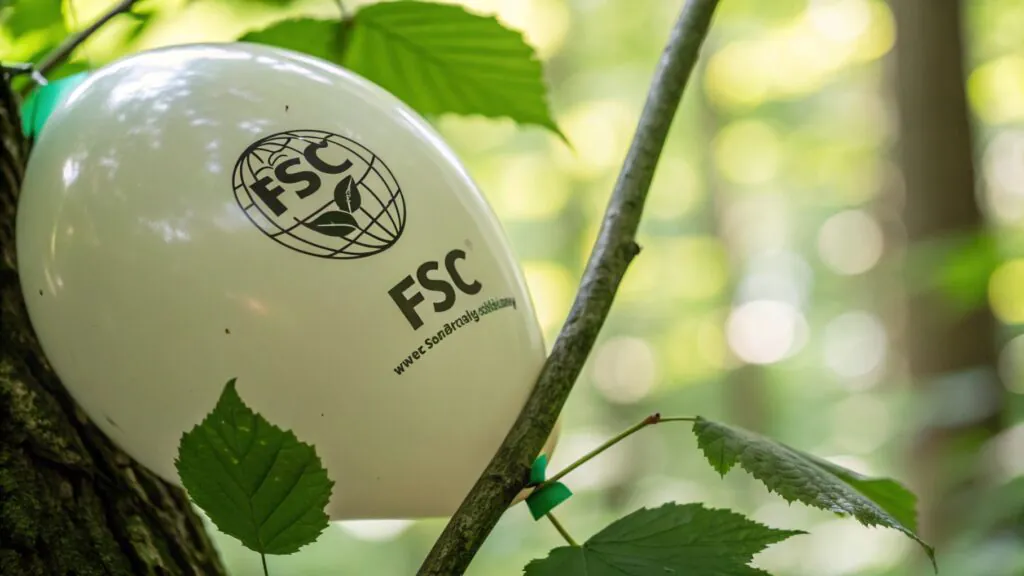
It is easy to get lost in the jargon of "eco-friendly" claims. As someone deeply involved in balloon manufacturing, I want to clarify how these terms connect. My goal is always to provide accurate information to our partners, like Sarah, so they can make informed decisions.
Understanding the Link Between FSC and Biodegradability
FSC certification is about responsible sourcing. It tells you where the raw material came from. Biodegradability is about what happens to the product after it is used. For latex balloons, these two concepts work together.
| Feature | Description | Relevance to Balloons |
|---|---|---|
| FSC Certification | Certifies that the material (e.g., natural rubber latex) comes from forests managed in an environmentally appropriate, socially beneficial, and economically viable manner. It focuses on forest management practices, not the product's end-of-life. | Ensures the latex used in balloons is sourced from sustainable rubber tree plantations18. This minimizes deforestation and supports ethical labor practices, which is crucial for the environmental and social impact of the raw material. |
| Biodegradability | The ability of a material to decompose through the action of microorganisms (bacteria, fungi) into natural substances like water, carbon dioxide, and biomass. Natural latex is inherently biodegradable. The speed of decomposition depends on environmental conditions (temperature, moisture, presence of microbes). | Natural latex balloons are biodegradable. They break down at a rate similar to an oak leaf under suitable conditions. This means they do not persist in the environment for hundreds of years like synthetic plastics. |
| "Compostable" Certification | A specific type of biodegradability that implies a material can break down in a controlled composting environment within a specific timeframe, leaving no toxic residue. This often requires industrial composting facilities and specific temperature/moisture conditions. | While natural latex balloons are biodegradable, they are typically not "compostable" in the same way as food waste or certified compostable plastics unless specifically tested and certified for industrial composting, which is rare for balloons due to their form and typical disposal methods. |
| "Marine Biodegradable19" | A specific claim meaning a material can decompose in a marine (saltwater) environment. This is a very high standard and difficult for most products to meet. | Few, if any, balloons currently meet this standard. Even natural latex breaks down much slower in marine environments than on land due to colder temperatures and different microbial populations. |
So, an FSC-certified latex balloon ensures responsible sourcing. Its natural latex makes it biodegradable. This combination offers a more complete sustainable solution. It shows a commitment from raw material to natural decomposition.
Conclusion
The demand for FSC-certified balloons is definitely on the rise. We must work together to protect our environment, and choosing certified products is a critical step in that journey.
-
Explore this link to understand the advantages of FSC-certified latex balloons and how they contribute to sustainability efforts. ↩
-
Discover why eco-certified options are crucial for sustainability and how they can enhance your product offerings. ↩
-
Understand how transparency in supply chains enhances trust and accountability in sourcing certified products. ↩
-
Explore this link to understand the significance of FSC Certification in promoting sustainable sourcing and its impact on the environment. ↩
-
Understanding eco-friendly credentials helps you choose responsible manufacturers and make informed purchasing decisions. ↩
-
ISO 14001 certification indicates a commitment to reducing environmental impact, essential for responsible manufacturing. ↩
-
Sedex SMETA certification ensures ethical labor practices, making it vital for consumers concerned about manufacturing ethics. ↩
-
Learn about responsible disposal methods to minimize waste and promote sustainability after events. ↩
-
Discover how using recycled paper can minimize environmental impact and enhance creativity in decor. ↩
-
Learn about the environmental impact of various event decorations and how to make responsible choices. ↩
-
Find out why organic cotton is a sustainable choice for fabric decorations and its environmental benefits. ↩
-
Learn about the significance of biodegradable materials in reducing waste and promoting sustainability. ↩
-
Learn how natural wood elements can add beauty and sustainability to your event decor. ↩
-
Discover how unique decorations can make your event stand out while being eco-friendly. ↩
-
Understand how circular economy principles can guide sustainable event planning and decoration choices. ↩
-
Find out how LED lighting can enhance ambiance while being energy-efficient and sustainable. ↩
-
Explore how dynamic displays can create engaging experiences at events while being sustainable. ↩
-
Explore the environmental and social benefits of sustainable rubber tree plantations in the latex industry. ↩
-
Discover the challenges and importance of marine biodegradability in reducing ocean pollution. ↩
